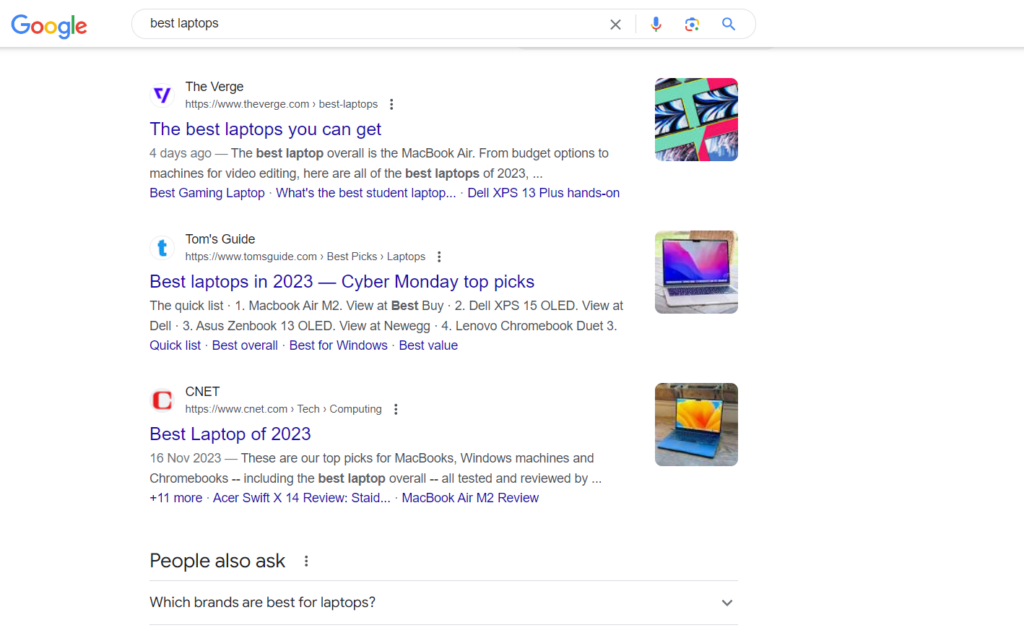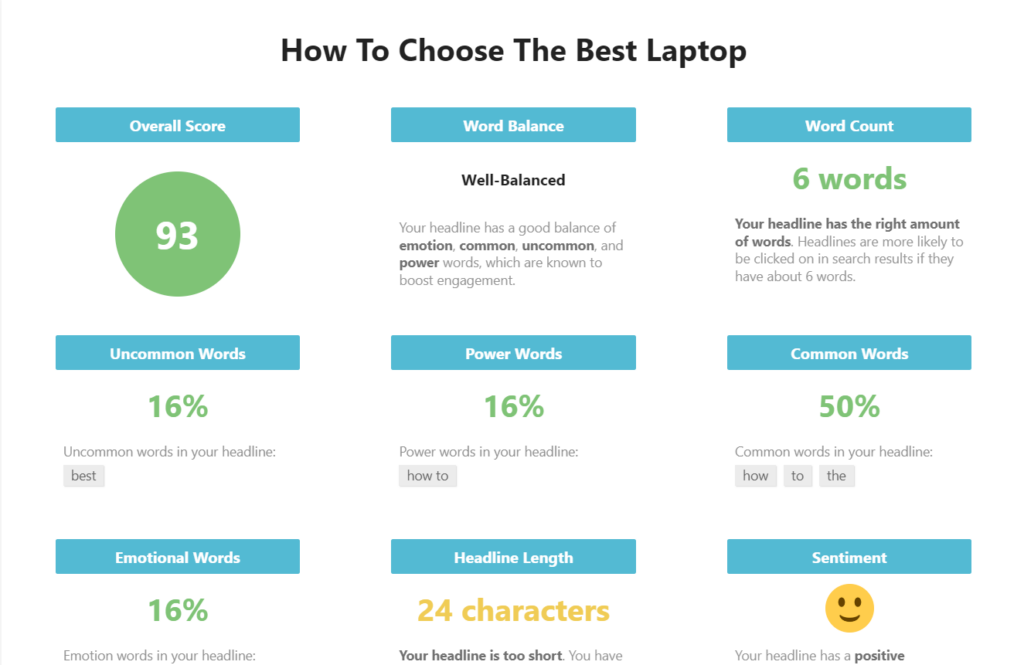Success in affiliate marketing happens when people click on your link and make a purchase.
In short, higher Click-Through Rates or CTRs are the lifeblood of your affiliate business.
A high CTR means more traffic, more conversions, and of course, more commissions.
But how can you ensure that your links are getting the attention they deserve?
That’s precisely what we’ll address in this post.
We’ll explore practical and effective strategies to get your audience to click on your links and drive buying behavior.
Consequently, you’ll boost affiliate income in no time. Keep reading to learn more!
Exploring Click-Through Rates
Before we dive into boosting CTRs, let’s look at what they are in detail.
You probably know that this metric refers to the percentage of clicks a link receives compared to the total number of times it was viewed.
In affiliate marketing, this translates to how many people clicked on your affiliate links compared to how many people saw them.
Generally, the higher the CTR, the better.
However, a high CTR alone does not guarantee success.
What truly matters is whether those clicks result in conversions and ultimately, sales.
That’s why it’s crucial to focus on not just increasing your CTR but also ensuring that your links are directing people to relevant and valuable products or services. As you keep reading, you’ll learn not only how to increase your CTRs but also ensure you boost your earnings too.
How Can You Increase Your Click-Through Rates?
There are many simple but important steps that affiliate marketers can make to increase click-through rates.
The following tips cover increasing CTRs in SERPs (Search Engine Results Pages), email marketing, your website, and social media platforms.
You have to apply these tips in all those areas so that you can reap the full benefits.
1. Do Keyword Research
Keyword research is the foundation of any successful affiliate marketing campaign.
It’s crucial to identify keywords that your target audience uses in their searches and incorporate them into your content.
When people search for those keywords, your content will appear in the results, increasing the chances of clicks on your blog posts or website pages.
And this isn’t all, you should match keyword research with user intent. This means that your content should offer value and relevance to the user’s search query.
For example, users have different intentions when searching for keywords like ‘best laptops’ and ‘how to choose a laptop.’ And you should pay attention to the distinction between them.

Note how the top search results incorporate the keyword ‘best laptops’ in their content
Ensure that you understand user intent so you can tailor your content and affiliate links to meet their needs, increasing the likelihood of clicks.
2. Optimize Your Headlines and Titles
Headlines are often the first thing people see when they come across your content. And in one glance, they decide whether or not to click. They appear in your social media link previews, ads, and on search result pages.
That’s why it’s crucial to optimize your headlines and titles to attract attention and draw people in.
Always add relevant keywords and phrases to headlines and titles on your blog posts, email subject lines, and social media posts.
If they offer value to your readers and are tailored to their interests, they’re more likely to click through.

Use a headline analyzer to generate a score and improve your CTRs
It’s also wise to use a headline analyzer tool to gamify or guide your headline creation process. A simple analyzer will give you a score and help you make small changes to your headline copy and make them more clickable.
3. Leverage Your Meta Descriptions
Search Engine Result Pages (SERP) show a meta description for each result. These are short snippets that summarize the content of the page, making them an essential part of increasing CTRs.
Readers often skim through meta descriptions to decide whether the content is worth their time. Very often, they click on a link based on what the meta description shows them.
You should know that you don’t always control what search engines display in these snippets, but you can influence them.
Try to incorporate your researched keywords in your blog post meta descriptions. But don’t force them in, make the descriptions flow naturally and show readers that they’ll find the answer to their problems in your content. This will make them click on your link over your competitors’ and give you opportunities to promote your products and drive sales.
4. Incorporate Clickable Buttons
One of the best ways to get people to click on your affiliate link is to make it stand out.
Clickable buttons are the perfect way to achieve this. They are visually appealing and grab readers’ attention, making them more likely to click through.
You should find this easy to do if you use WordPress. The latest Gutenberg Blocks include buttons you can customize and add to your posts or pages.
There are also many WordPress plugins that give you a free or premium option to add such buttons to your website or post.
These plugins will also provide you with pre-made templates for product comparison tables, product ranking tables, and similar features. These graphic and interactive elements will stand out in a sea of text and compel people to take action.
And using these tools are a powerful way to boost your CTR.
5. Use Calls-to-Action (CTAs)
While on the subject of Clickable Buttons, let’s talk about CTAs.
A call-to-action is a phrase or word that prompts readers to take action, in this case, clicking on your affiliate link.
It could be something as simple as ‘Click here’ or ‘Find out more,’ but it should always be clear and direct.
You can make your CTAs more effective by turning them into buttons. Especially when you’re at the final stages of the marketing funnel and want to push people to make a purchase. A great CTR has the following qualities:
- It’s specific and direct
- It creates a sense of urgency or demand
- It’s action-oriented, using verbs to compel readers to take action
When you optimize your calls-to-action, you increase the likelihood of your audience engaging with your brand – which leads to more sales and profits.
6. Leverage Opt-in Popup Forms
Opt-in popups have a bad reputation because of their rampant misuse by marketers.
However, when used effectively, they can greatly increase click-through rates and conversions.
An opt-in popup does what its name implies – it ‘pops up’ on a webpage, usually when a user has spent some time there or intends to leave.
It’s your chance to grab their attention and convince them why they should click on your link or stay longer on your page.
The key to making such opt-in forms work is to offer value in exchange for their time and potential action. One of the most valuable things you can offer is exclusive knowledge or information that your audience desires. For example, eBooks, checklists, free courses, or any other digital products.
Your audience will click on your opt-in forms and drop their email information because they want to access your exclusive offers. Doing so gives you the opportunity to upsell your products further down the line and create a pipeline to drive passive affiliate income.
Bonus Tip: Did you know that the longer a person stays on your site, the more positive a signal it sends to Google’s algorithm? This can ultimately improve your search engine ranking and visibility, leading to more organic traffic and clicks. So, leverage opt-in forms to keep your readers engaged and on your site for longer periods.
7. Test, Test, and Test!
The key to successful affiliate marketing is testing different strategies continuously. This applies to all aspects of your campaign, including optimizing click-through rates.
Test different headlines, titles, meta descriptions, CTAs, buttons, and opt-in forms to see which combination works best for your audience.
You can use A/B testing or split testing to compare the performance of different elements and make data-driven decisions.
Even minor changes like using a different color for a CTA button or changing a word in your headline can significantly impact click-through rates.
So, don’t be afraid to experiment and see what works best for your audience.
You also need to use the right tools to do this. Some of which are:
- Heatmaps via Crazy Egg to see where your readers’ attention is directed on a webpage
- Google Optimize to A/B test different elements, and get data-backed insights
- HubSpot for dynamic content personalization, especially if you’re targeting multiple audiences with different interests.
- Running ads on social media and search engines and testing different variations to see which ones result in better CTRs
Remember, the more you test and refine your strategies, the more successful and profitable your affiliate marketing endeavors will be.
Skyrocket Your Affiliate Income by Boosting Your Click-Through Rates
By now, you should know that click-through rates are crucial to your success as an affiliate marketer. Without people clicking on your affiliate links, there’s no way for you to earn any commissions.
However, any effort you make to optimize CTRs is worth it because even a slight improvement could lead to a cascade of positive results.
So, use the tips laid out here and continue learning and implementing new strategies.
Before long, you’ll have boosted your click-through rates, increased traffic to your affiliate links and ultimately, made more money in commissions.





